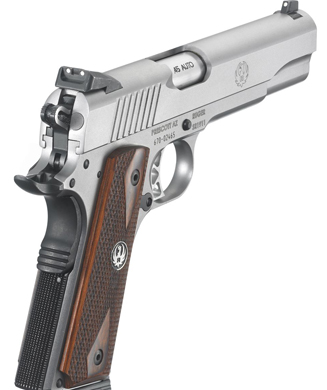We may earn revenue from the products available on this page and participate in affiliate programs. Learn More ›











































Shooting Editor, John Snow, gives you a sneak peek at Ruger’s latest 1911.

